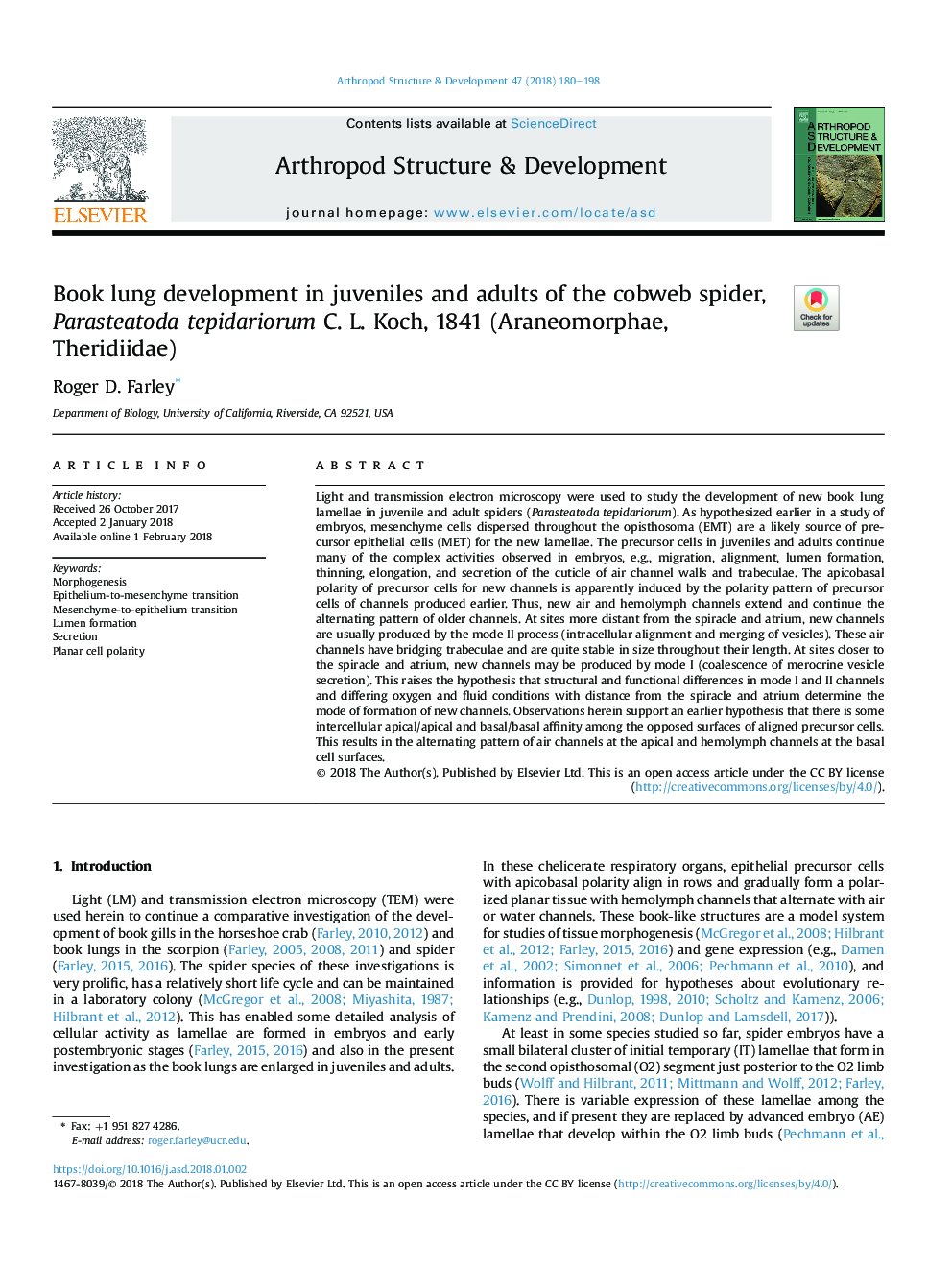| Article ID | Journal | Published Year | Pages | File Type |
|---|---|---|---|---|
| 8624693 | Arthropod Structure & Development | 2018 | 19 Pages |
Abstract
Light and transmission electron microscopy were used to study the development of new book lung lamellae in juvenile and adult spiders (Parasteatoda tepidariorum). As hypothesized earlier in a study of embryos, mesenchyme cells dispersed throughout the opisthosoma (EMT) are a likely source of precursor epithelial cells (MET) for the new lamellae. The precursor cells in juveniles and adults continue many of the complex activities observed in embryos, e.g., migration, alignment, lumen formation, thinning, elongation, and secretion of the cuticle of air channel walls and trabeculae. The apicobasal polarity of precursor cells for new channels is apparently induced by the polarity pattern of precursor cells of channels produced earlier. Thus, new air and hemolymph channels extend and continue the alternating pattern of older channels. At sites more distant from the spiracle and atrium, new channels are usually produced by the mode II process (intracellular alignment and merging of vesicles). These air channels have bridging trabeculae and are quite stable in size throughout their length. At sites closer to the spiracle and atrium, new channels may be produced by mode I (coalescence of merocrine vesicle secretion). This raises the hypothesis that structural and functional differences in mode I and II channels and differing oxygen and fluid conditions with distance from the spiracle and atrium determine the mode of formation of new channels. Observations herein support an earlier hypothesis that there is some intercellular apical/apical and basal/basal affinity among the opposed surfaces of aligned precursor cells. This results in the alternating pattern of air channels at the apical and hemolymph channels at the basal cell surfaces.
Related Topics
Life Sciences
Agricultural and Biological Sciences
Insect Science
Authors
Roger D. Farley,
